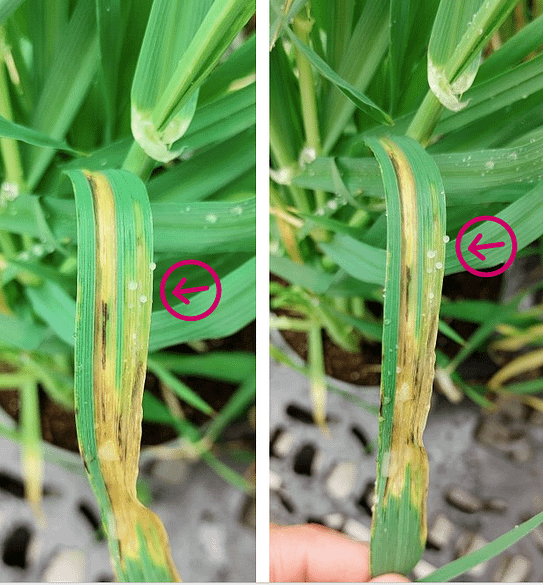Bacterial Leaf Streak and Black Chaff of Cereal Crops in the Prairies
Bacterial leaf streak and bacterial black chaff of cereals, caused by Xanthomonas translucens pv. undulosa and Xanthomonas translucens pv. translucens, have become more prevalent in the Prairie provinces recently due to a combination of favourable conditions and increased awareness.
Bacterial leaf streak is an important disease of cereal crops all over the world and can cause a significant reduction in yield – in some cases up to 50 per cent.
Alberta Grains, Manitoba Crop Alliance, SaskBarley, Sask Wheat worked together to create an extension resource on Bacterial Leaf Streak and Black Chaff Across the Prairies with the support of plant pathologists: Dr. Michael Harding, Dr. Kelly Turkington, Dr. Maria Constanza Fleitas, Dr. Randy Kutcher, Dr. Jie Feng, Dr. James Tambong and Dr. Sean Walkowiak.
Key Takeaways:
- Bacterial leaf streak and bacterial black chaff are polycyclic with multiple generations per year.
- Bacterial leaf streak is mainly seed-borne but can overwinter in winter cereals and perennial grasses.
- Symptoms of bacterial leaf streak typically appear as water-soaked spots or streaks, that may have
a translucent appearance. Under wet conditions, lesions produce a milky white or yellowish
exudate that makes the leaf surface feel slippery. - Bacterial leaf streak and bacterial black chaff cannot be controlled with foliar or seed treatment
fungicides. - Management can be achieved through the combined use of clean seed, seed testing,
scouting, crop rotation, variety selection and irrigation management.
Read the full document here: Bacterial Leaf Streak And Black Chaff Of Cereal Crops In The Prairies (pdf)






